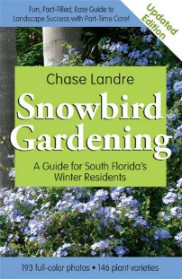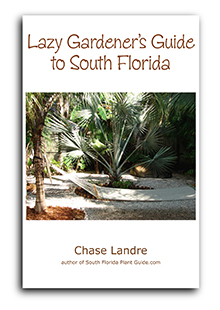Bottle Palm
Hyophorbe lagenicaulis
The bottle palm, aptly named for its uniquely shaped trunk, is happiest in the warmer areas of South Florida.

Though it can be cold-sensitive, this palm is an outstanding accent palm for tropical garden beds or sheltered entry areas. Its small size and striking appearance enhance formal or eclectic landscapes.
The fronds are few but long and graceful.
And the crownshaft (the area above the trunk) and leaf stems (petioles) have an attractive reddish color that fades as the palm slowly matures.
Most often seen as a single specimens, bottle palms are also available as novel, eye-catching multi-trunk specimens, usually with 2 or 3 trunks.
Contrary to popular belief, the swollen trunk of this mini palm tree is not for water storage. Though it can be moderately drought-tolerant once it's established, this palm does need regular irrigation during dry spells.
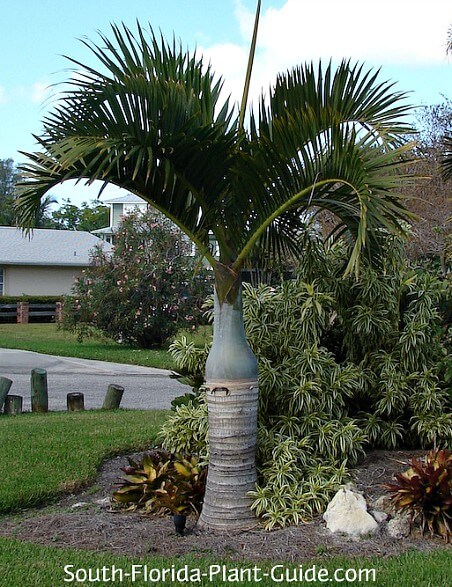
Plant specs
Bottles are slow growing palms that could end up about 10 feet at maturity...but maturity takes many, many years. Most specimens in the landscape average only 5 to 7 feet tall.
Cold is a very real threat, so growing in Zone 10B - especially in warmer coastal areas - is fine for normal winter temperatures.
In Zone 10A plant in a sheltered location and be prepared to protect the palm from cold (see Plant Care below).
Bottles are drought-tolerant and like full to part sun locations.
They can be used in partial shade as well, but if there's too much shade the crownshaft will grow elongated and lean toward the light - turning unique into just plain ugly.
These palms are highly salt-tolerant making them ideal for coastal plantings.
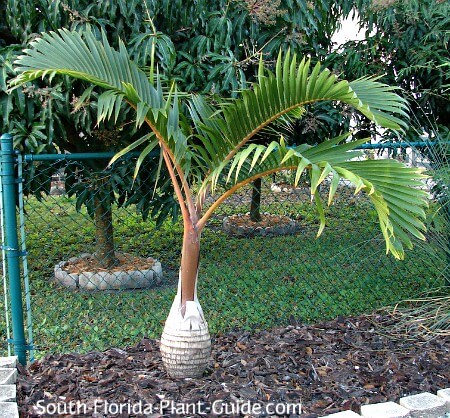
Plant care
Plant in an area where the soil drains well, like a beach environment.
This palm does not like an overly wet area. Add top soil to the hole when you plant.
Bottles aren't self-cleaning but, due to their slow growth rate, you'll rarely have to trim off an old frond.
Freezing or sub-freezing temperatures can kill a bottle palm tree. For cold protection, tie up the fronds and wrap the entire head of the palm with frost cloth or a thick blanket.
If the cold weather damages any
fronds, resist the urge to to trim them until winter is over. Damaged
fronds will usually bear the brunt of future cold weather, protecting
the rest of the palm.
Freezing temperatures or frost for a few hours generally won't kill a bottle palm, but it will burn back the majority of the leaves.
Since there are only a limited number of fronds anyway - usually only 4 to 6 - the palm may look sparse or even bald.
And because of the slow growth rate it'll take an entire season to produce and grow beautiful the next 3 or 4 fronds - just in time for the next winter.

This is not a hungry palm, so fertilizing with a slow-release granular three times a year - once a season in spring, summer and autumn - is plenty.
Bottles are fairly drought-tolerant once established, though a regular watering keeps them looking their best.
Plant spacing
The limited number of fronds keeps them from competing with one another, so these palms can be planted in groups or in a line as close as 4 to 6 feet apart.
Come out from the house at least 6 feet to prevent the fronds from touching the wall.
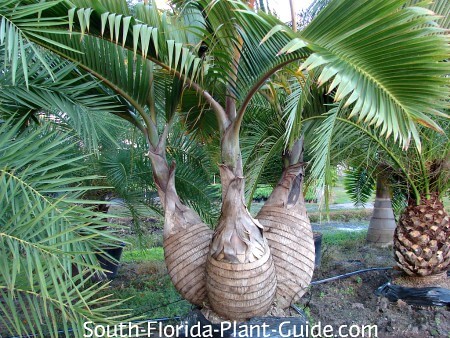
Multi-trunk bottles should be positioned well away from any structure, since their swollen bases keep the trunks fanned out fairly far apart.
A multi-trunk palm that starts out like the above picture...could end up like this!
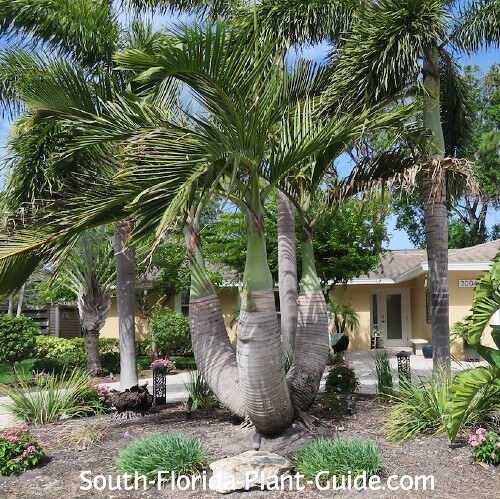
This is an excellent container palm since it grows so slowly.
Landscape uses for bottle palm
- specimen for small to large garden beds
- in the center of a circular drive
- lining a drive or walk
- at the entry - as long as there's enough space for fronds to spread out
- in the poolcage planter
- as a container plant for a sunny patio
GOOD SNOWBIRD PLANT? YES (in warmer areas and/or if you can provide winter protection if needed)
COMPANION PLANT SUGGESTIONS: Small plants that like drier conditions and lots of sun, including baby sun rose, lantana, drift rose, dwarf clusia and crown of thorns.
Other palms you might like: Adonidia Palm, Spindle Palm
Take a break!
The ultimate guide to low-maintenance plants
and landscaping!
An ebook by
Chase Landre
author of
South-Florida-Plant-Guide.com
Learn more!
Get a greener thumb!
Want to learn more about South Florida planting, watering, fertilizing and dealing with weeds and pests?
See our Gardening How-To section for answers!
Get instant curb appeal!
An ebook by
Chase Landre
author of
South-Florida-Plant-Guide.com
Learn how to get instant curb appeal with fast growing plants and landscaping techniques!

